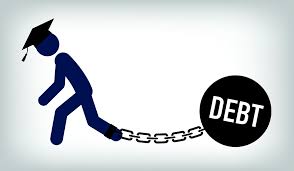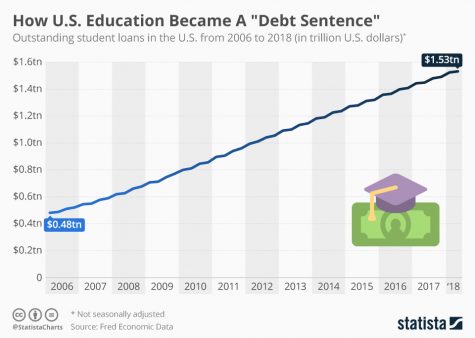College and Debt

Student debt can feel paralyzing – from theoccidentalnews.com
From as early as middle school, students are asked to think about their future past high school, whether that be college, trade school, or straight into a career. Schools do an amazing job of setting kids up for their future, however, one of the biggest barriers to students is the increasingly large cost for these schools.

According to Collegeboard.org, the average tuition for an in-state 4 year college in 2016 was about $10,000, for the average middle class family, that is a huge amount to pay, and in most cases, colleges leave students in debt for a large portion of their life.
Senior Meagan Green is planning on attending Seattle Pacific University, which is a 4-year private college. “I am very nervous about getting the money because I never realized how expensive it was going to be.”
Green also felt that the school told her as long as she applied for FAFSA and other forms of financial aid that she would be okay, but the truth is that is not the case. Money acquired from FAFSA depends on the income of your parents, among other factors. Typically financial aid will never completely cover tuition, which still leaves a large sum to be brought out as a loan.
The United States has been the victim of a student debt crisis for years, with the total count now at 1.5 Trillion dollars. Although college is a wonderful way to provide careers to many young adults, there are much less costly education, like trade school, with a larger demand for workers.

With the support from high school counselors and teachers, students should be pushed to go to college, or plan their career. But students should also be informed and keep in consideration the cost and be ready to have a debt to pay in the future.


